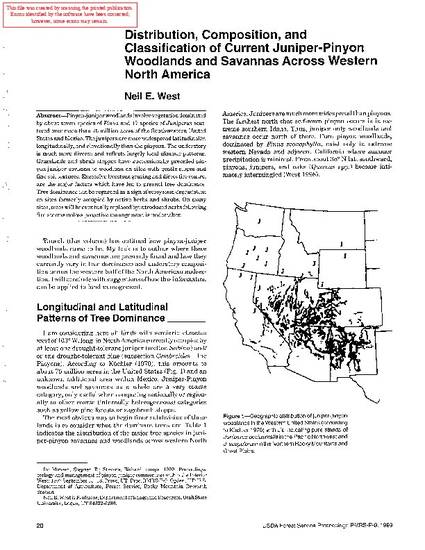
Contribution to Book
Distribution, Composition, and Classification of Current Juniper-Pinyon Woodlands and Savannas Across Western North America
Proceedings: Ecology and management of pinyon-juniper communities within the Interior West, 1997 September 15-18, Provo, Utah, RMRS-P-9
(1999)
Abstract
Abstract-Pinyon-juniperwoodlands involvevegetation dominated by about seven species of Pinus and 17 species of Juniperus scat- tered over more than 75 million acres of the Southwestern United States and Mexico. Thejunipers are more widespread latitudinally, longitudinally, and elevationally than the pinyons. The understory is much more diverse and reflects largely local climatic patterns. Grasslands and shrub steppes have succ~ssionally preceded pin- yon-juniper savanna to woodland on sites with gentle slopes and fine soil textures. Excessive livestock grazing and direct fire control are the major factors which have led to present tree dominance. Tree dominance can be regarded as a sign ofecosystem degradation on sites formerly occupied by native herbs and shrubs. On many sites, trees will be eventually replaced by introduced herbs following fire storms unless proactive management is undertaken.
Disciplines
Publication Date
1999
Publisher
U.S. Department of Agriculture, Forest Service, Rocky Mountain Research Station
DOI
https://www.fs.fed.us/rm/pubs/rmrs_p009/rmrs_p009_020_023.pdf
Citation Information
Neil E. West. "Distribution, Composition, and Classification of Current Juniper-Pinyon Woodlands and Savannas Across Western North America" Ogden, UTProceedings: Ecology and management of pinyon-juniper communities within the Interior West, 1997 September 15-18, Provo, Utah, RMRS-P-9 (1999) p. 20 - 23 Available at: http://works.bepress.com/neil_west/64/
